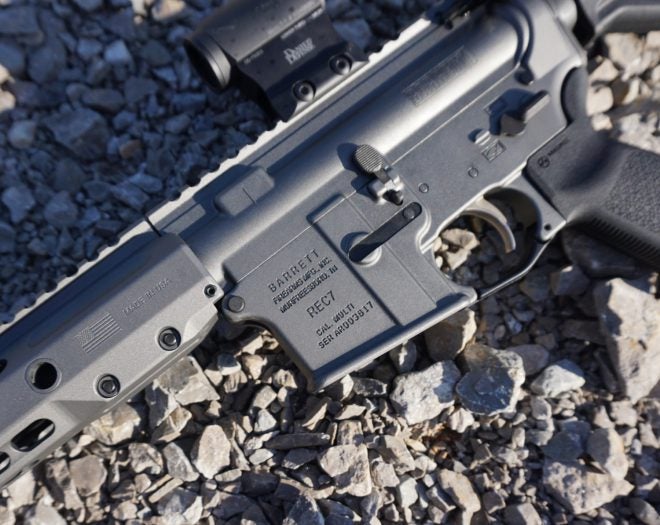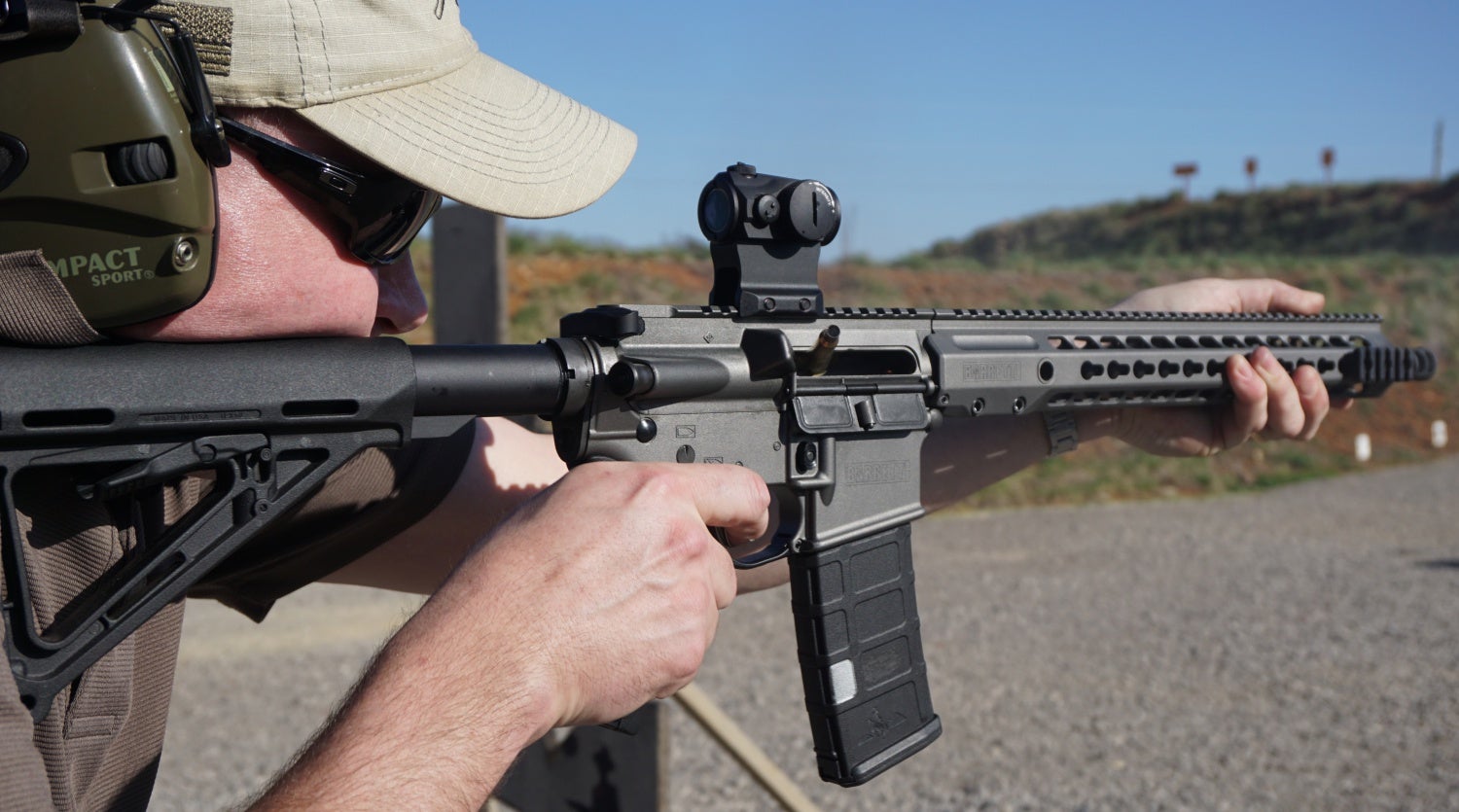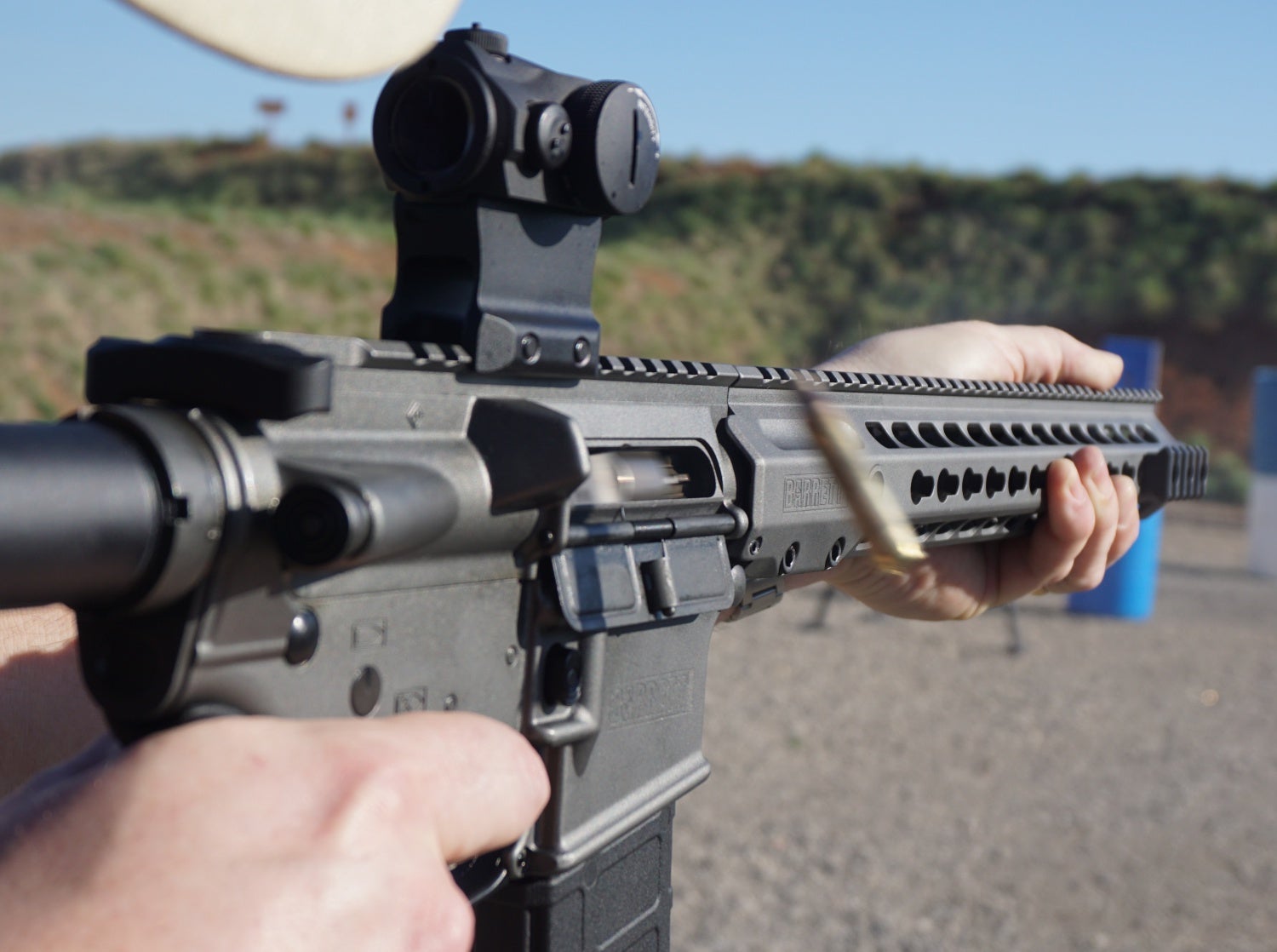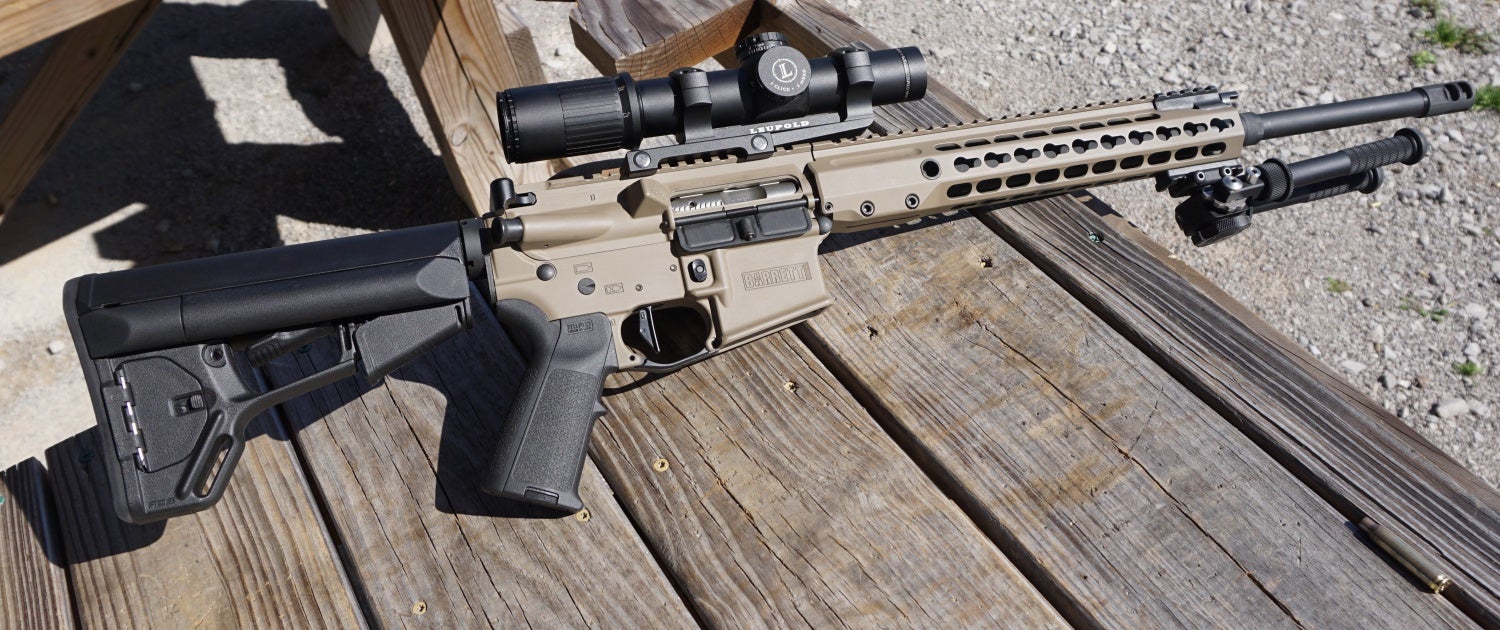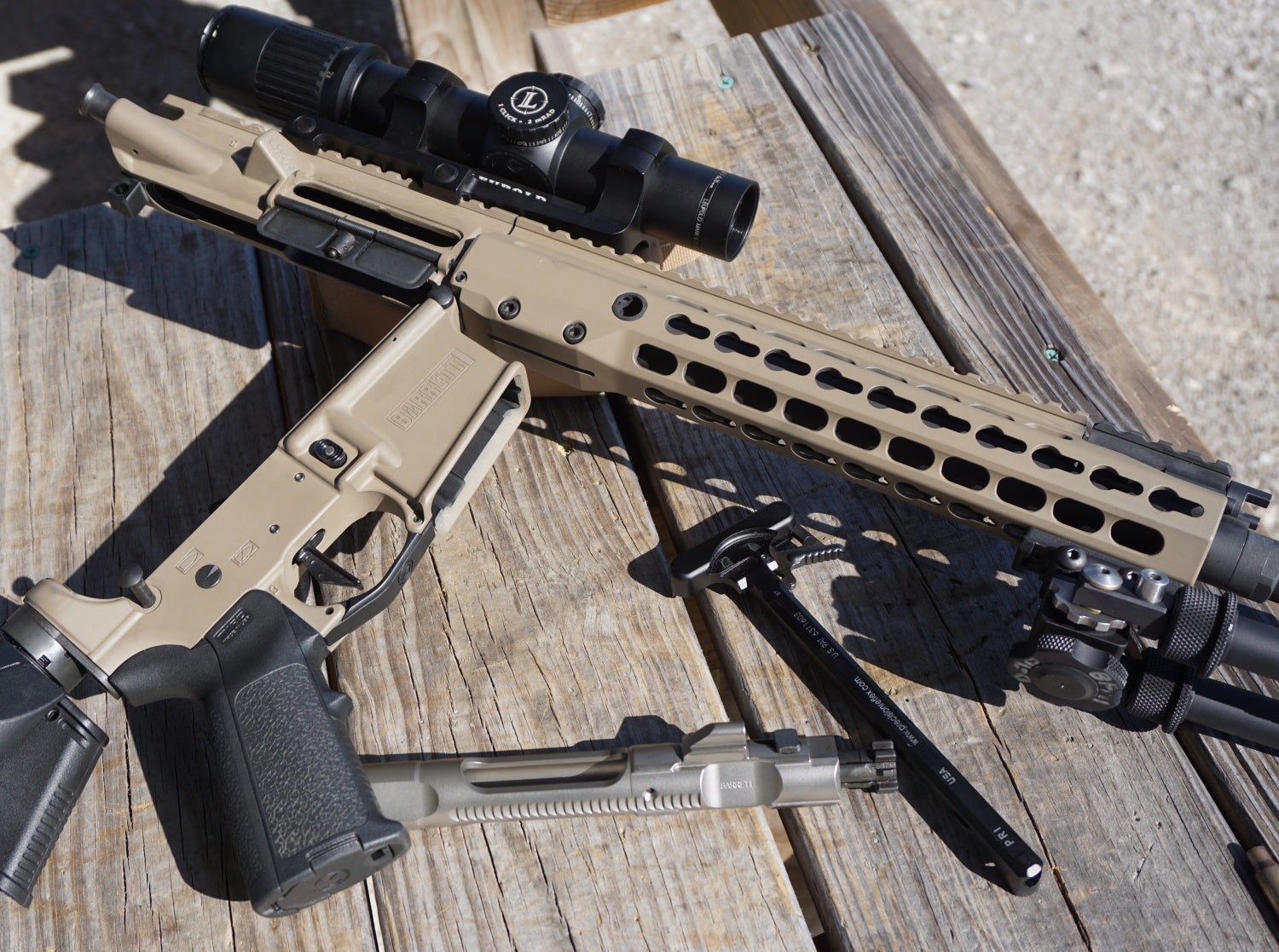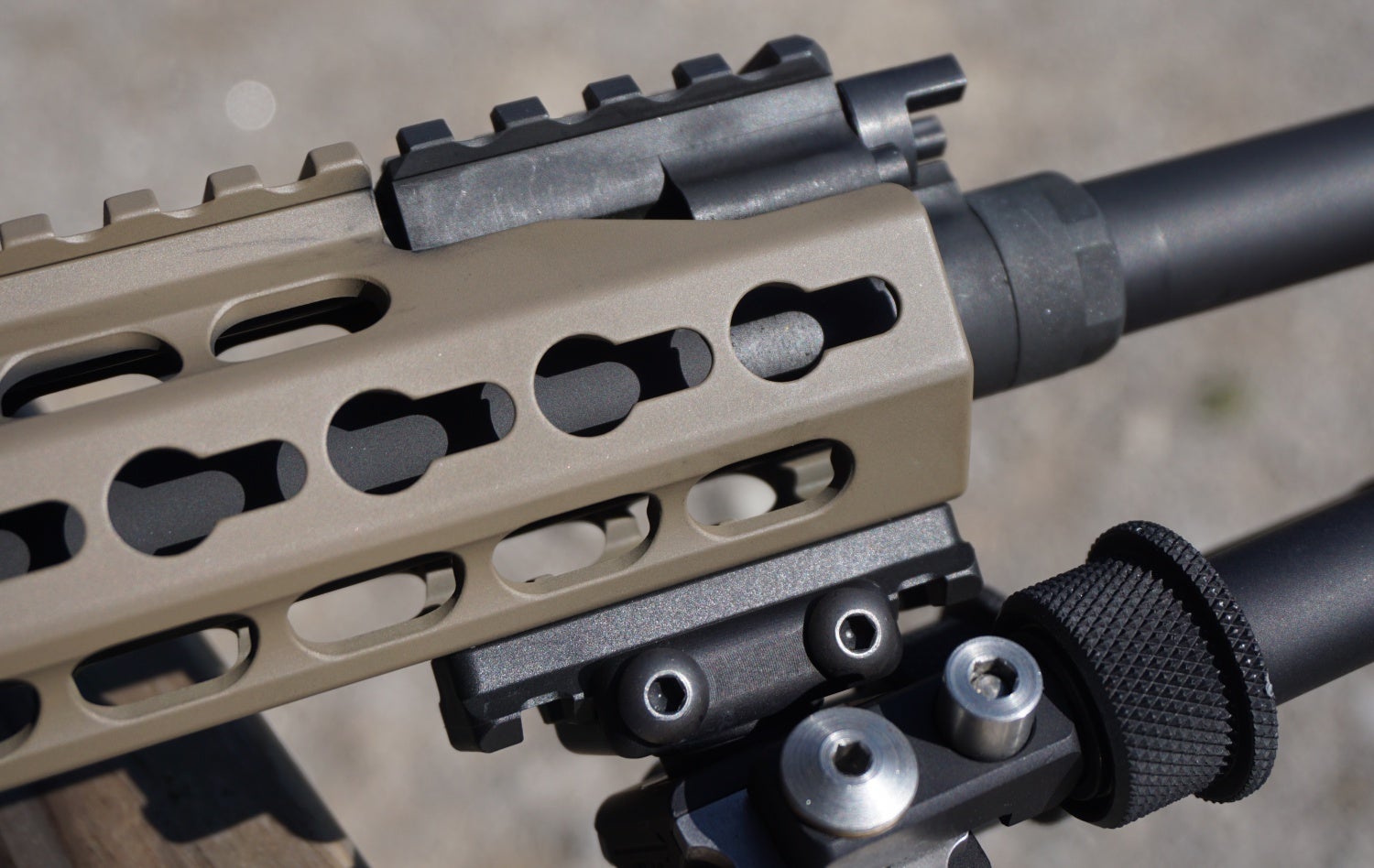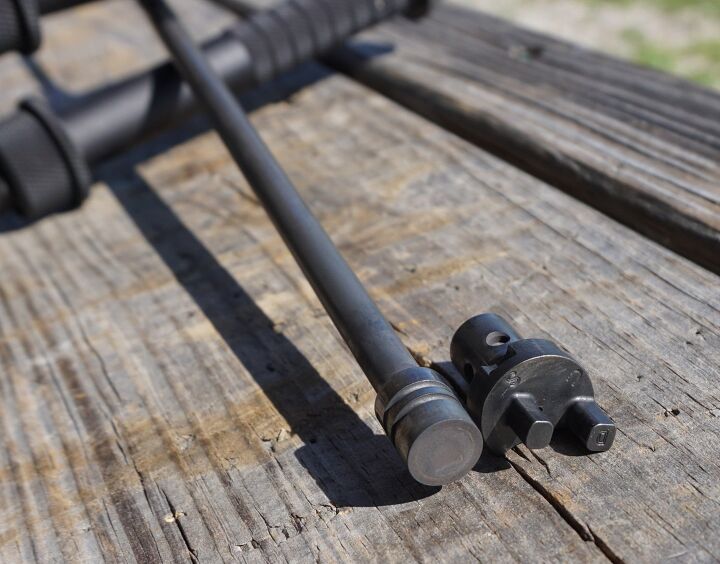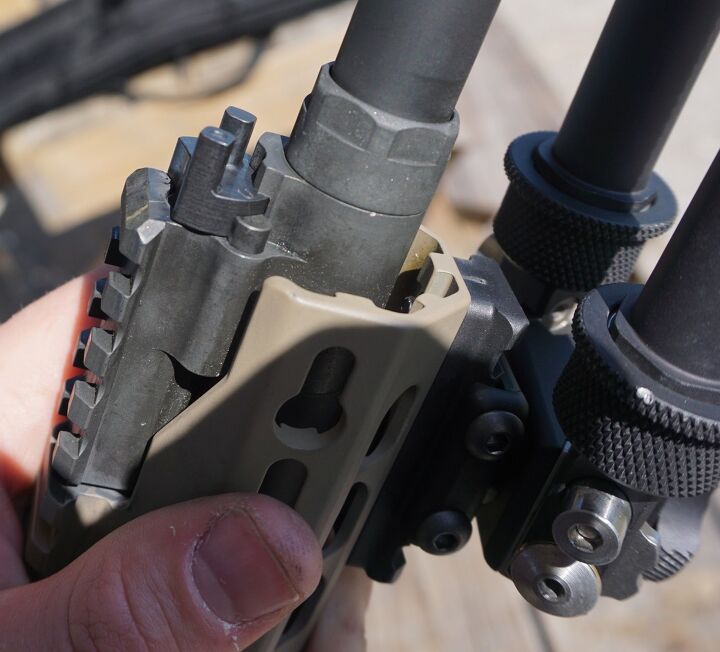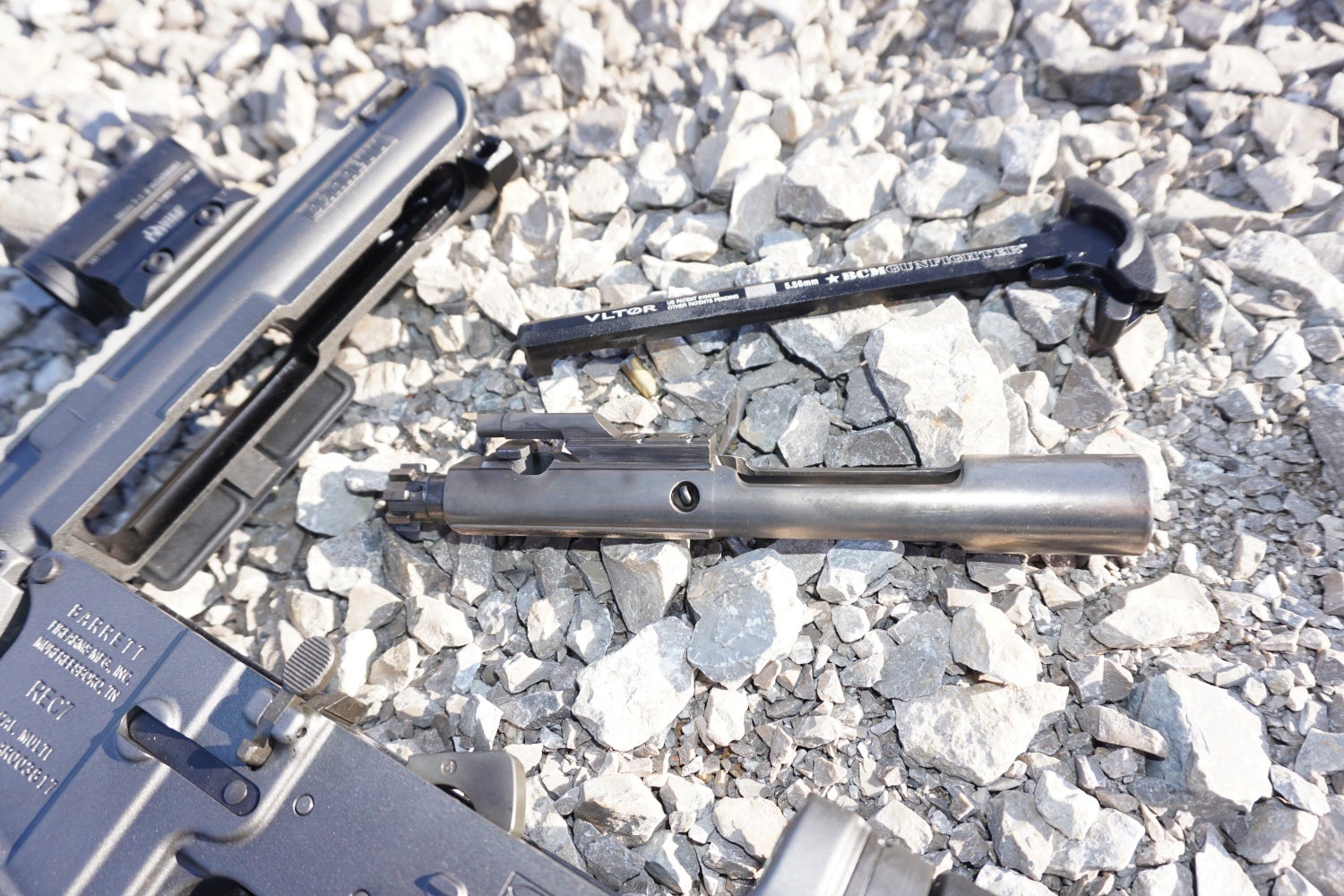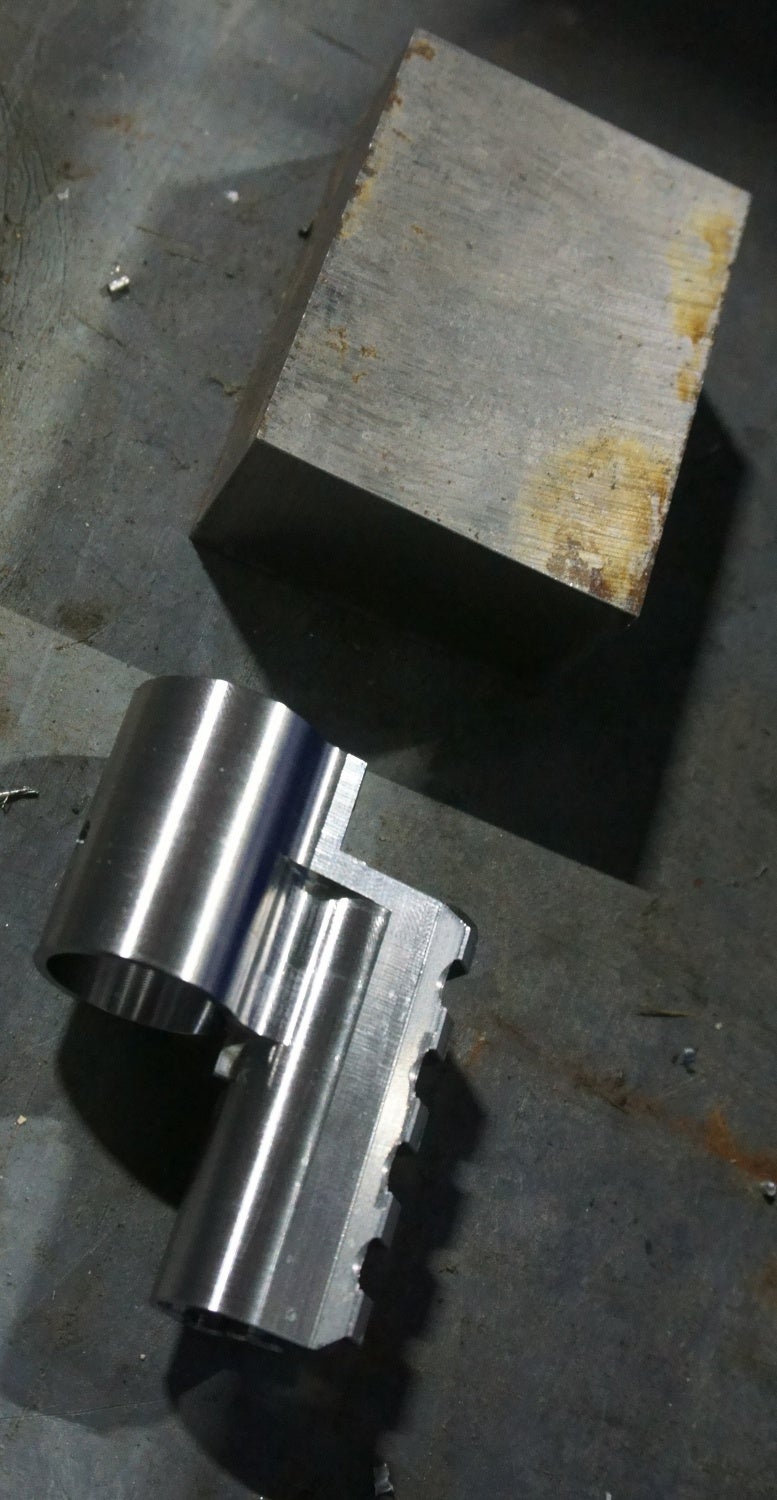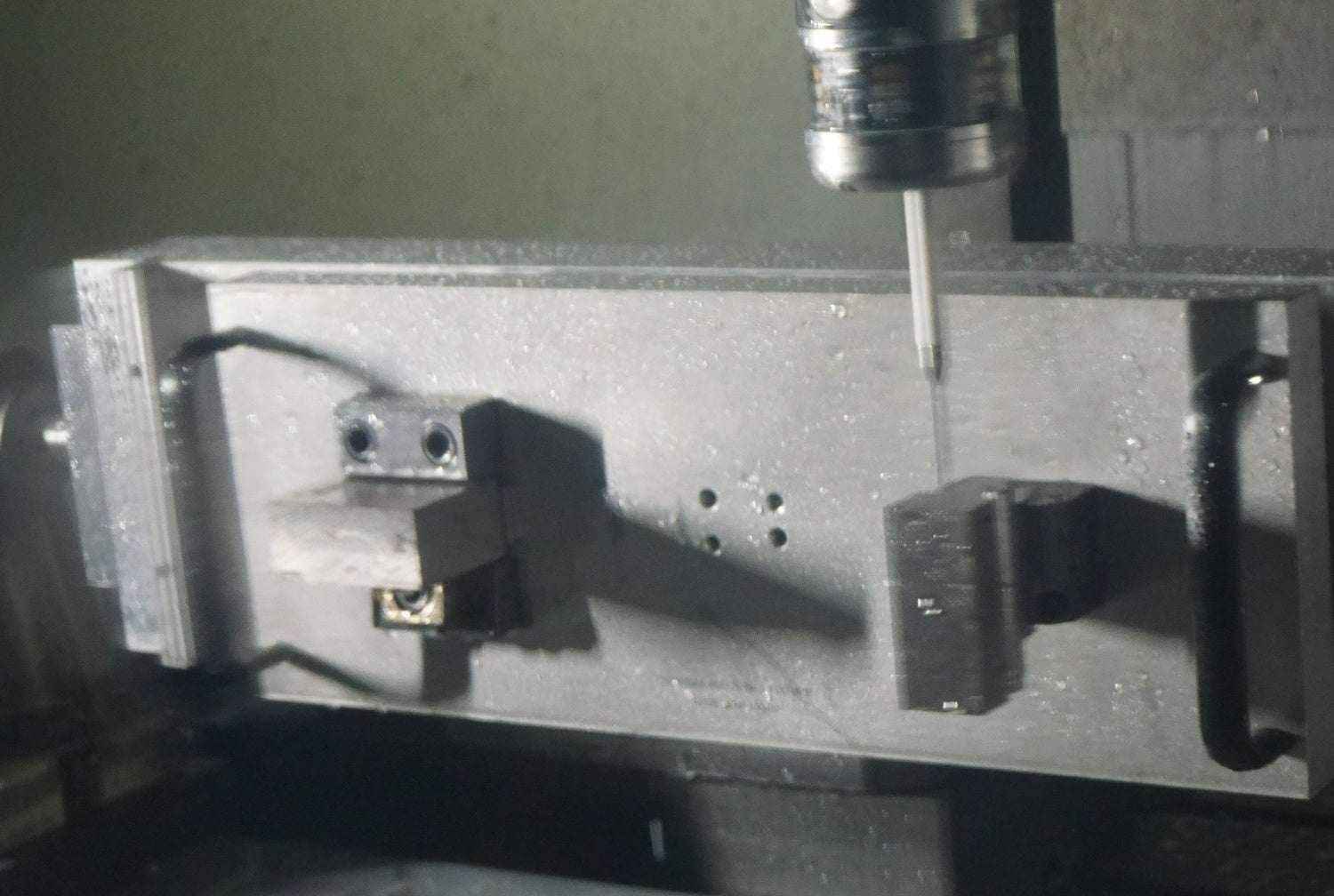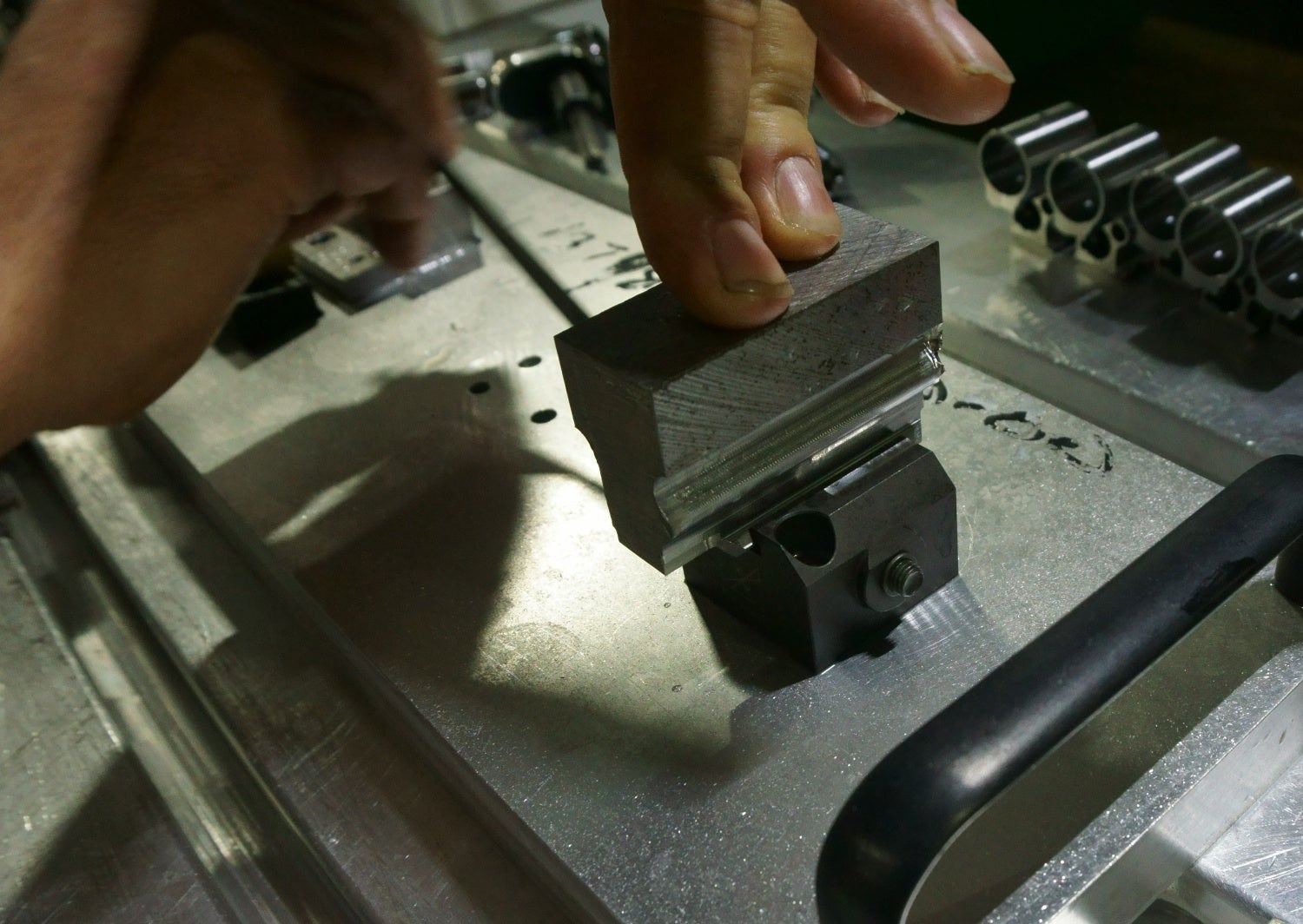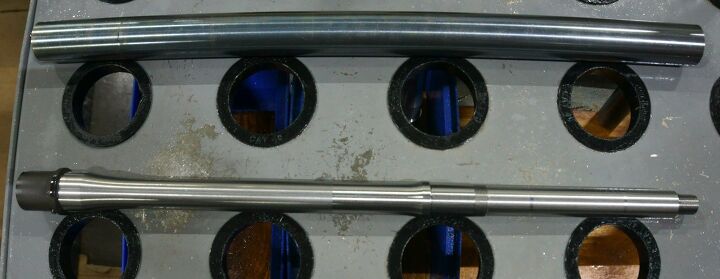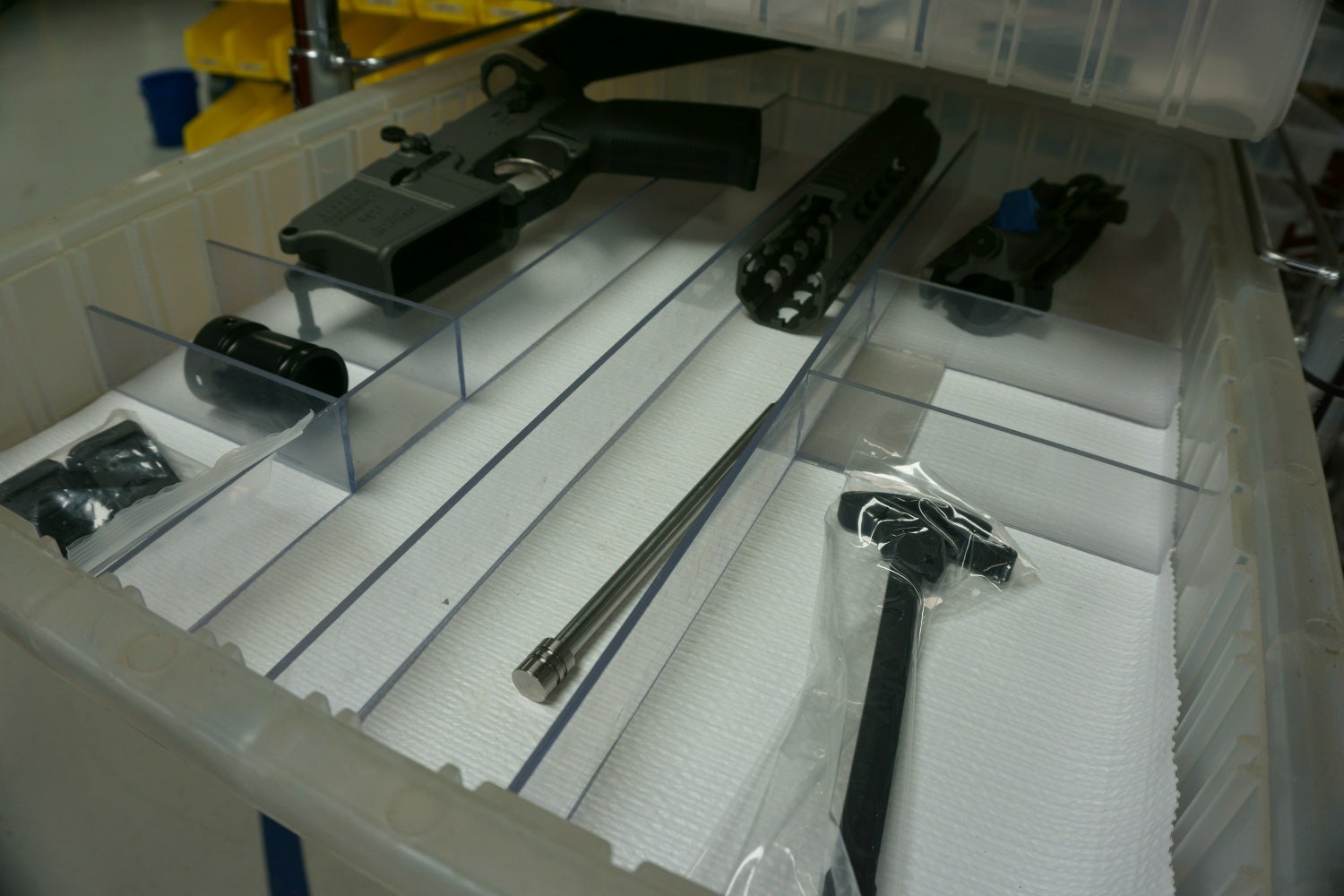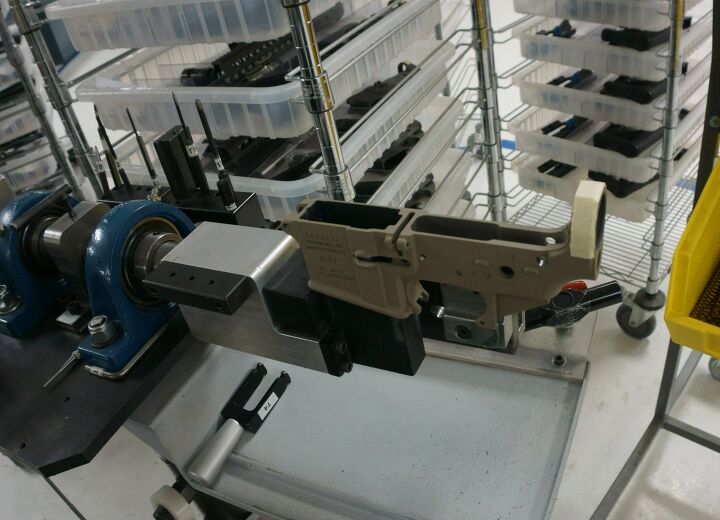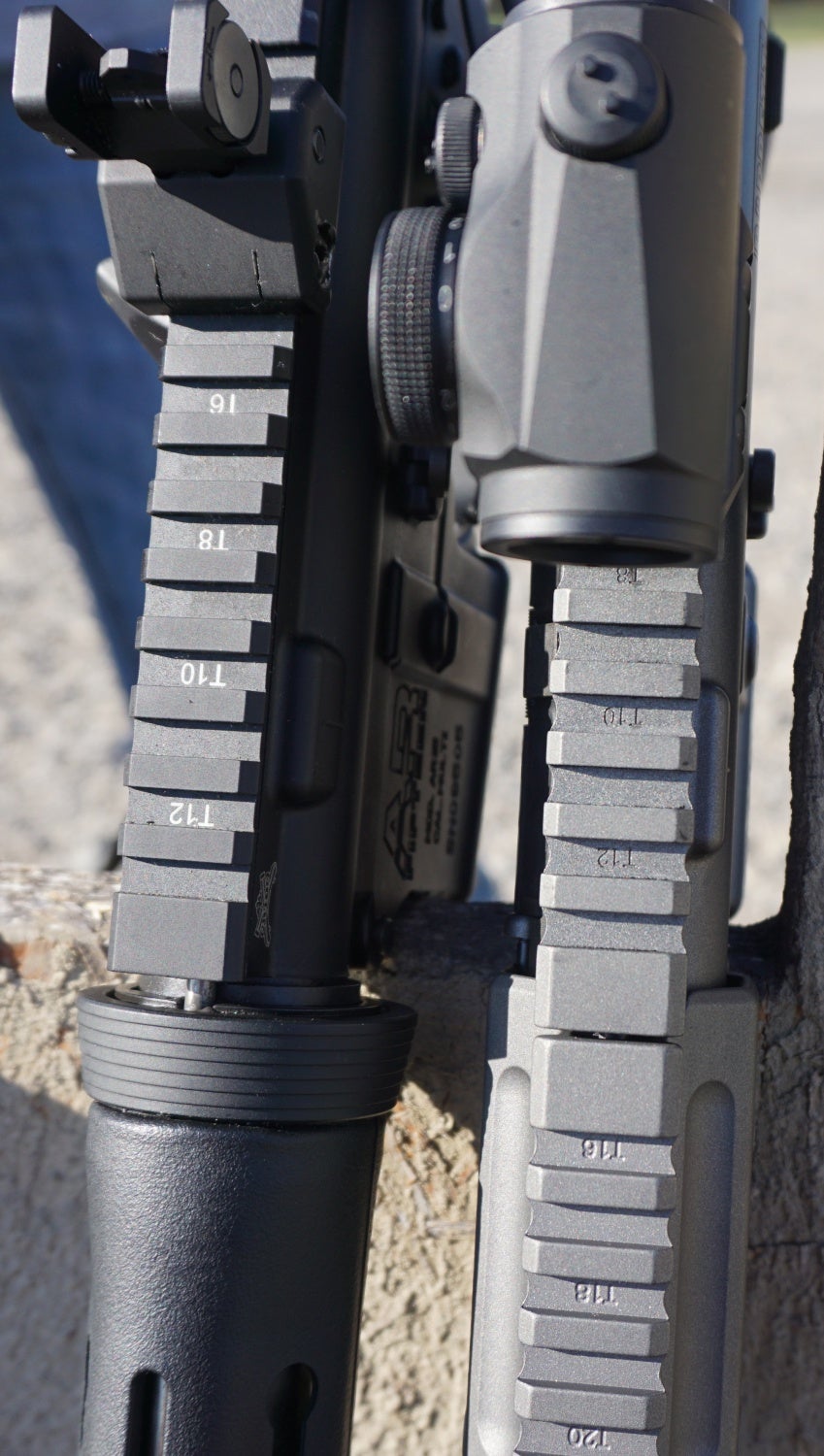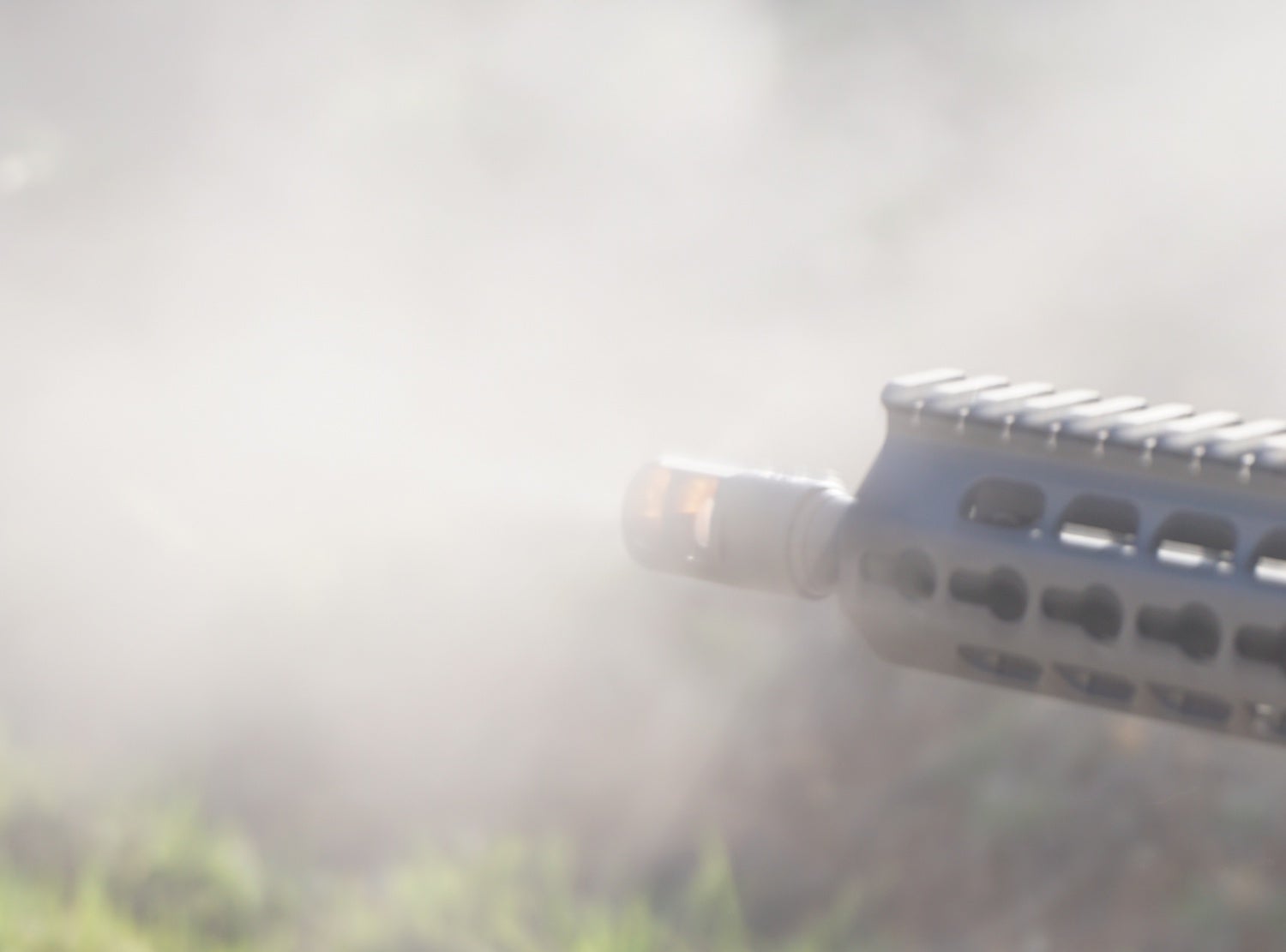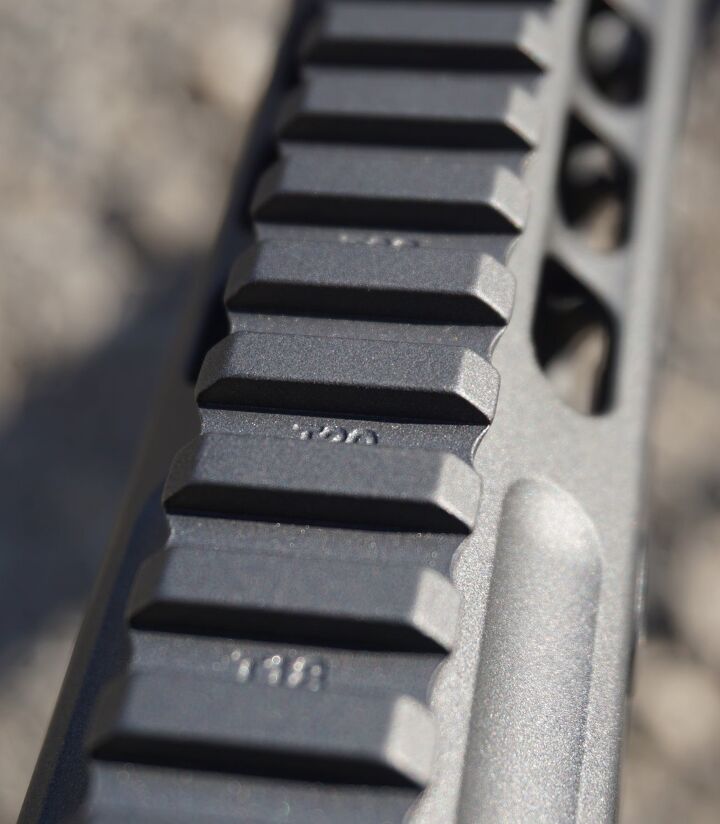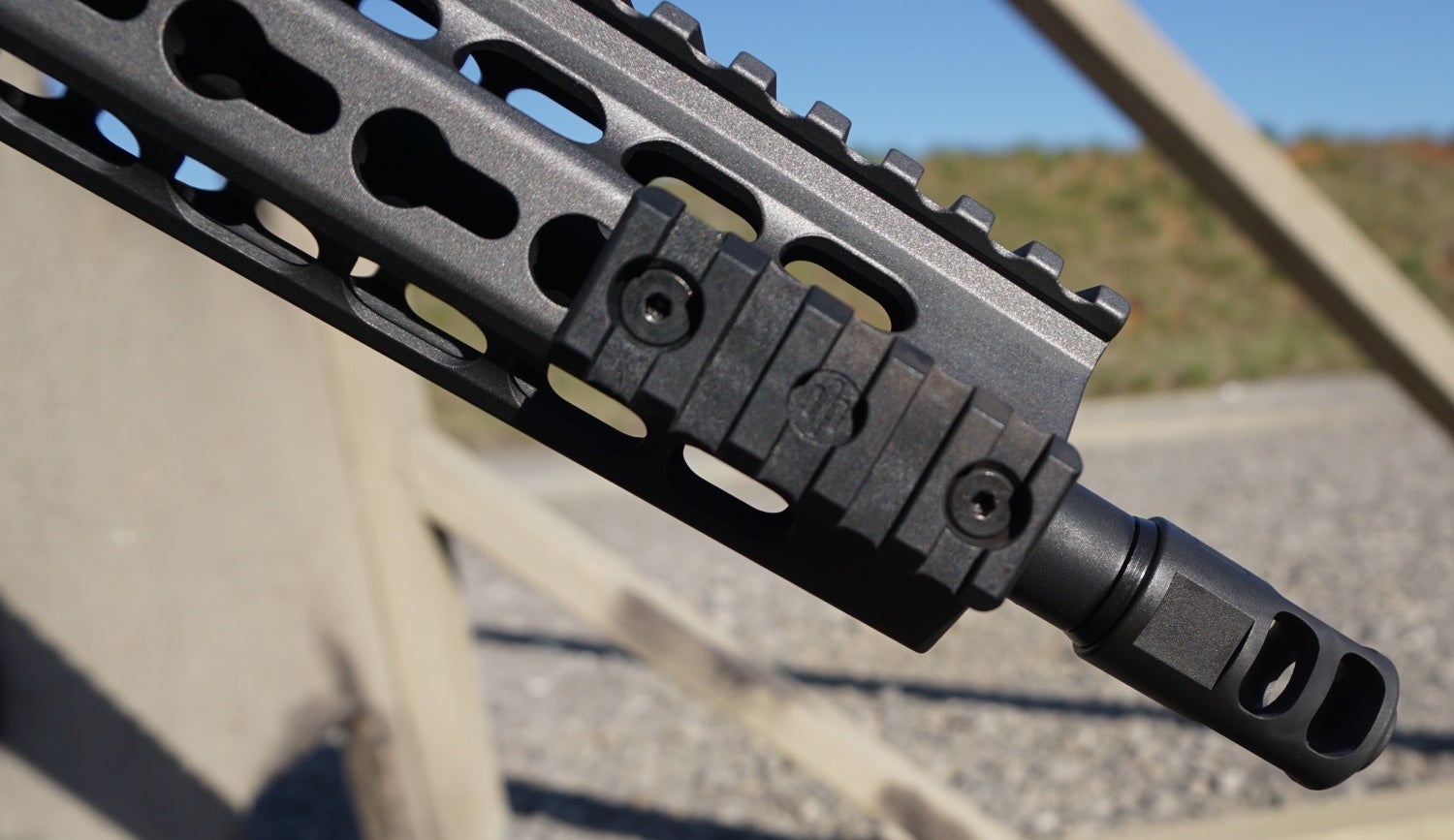The Barrett Reliability Enhanced Carbine (REC) really has its roots in the Barrett M468 program during the interest in the 6.8mm Special Purpose Cartridge (SPC) of more than a decade ago. The Army Marksmanship Unit (AMU) came to Barrett with the cartridge and said that they were looking for a sort of recce carbine or a Designated Marksmans (DM) rifle chambered in the round, for experimentation. Barrett got to work on the idea and came up with the M468, which is a direct gas impingement AR, chambered in 6.8mm SPC. It had some innovative features when it was introduced to the market, such as the modular handguard, full length top picatinny rail and a gas block that incorporated a ratchet system to accommodate the base of a mounted suppressor. However, the rifle didn’t sell as well as the company hoped, despite being the largest amount of rifles sold in the 6.8mm SPC to the civilian market. The line was then switched to just upper receivers, and then entirely discontinued in 2010.
But, the M468 left a sort of design spark within the company, because the potential of tapping into the civilian AR market was something that Barrett could not put down. Remember, this was coming from a company that up until the Model 98B and the M468 offered two rifles, in one caliber, and in one color, and that was their entire product line. The .50 BMG M82 and the M95. Today the company has diversified their product line to everything from the famous anti material rifles, to machine guns, precision rifles, and now AR15s.
Not to be content with the direct gas impingement AR, Barrett set about designing a piston operated AR15 in the REC7 series. Elements from the FAL and the AK designs were incorporated into the piston operated system, which in of itself is extremely simple. It consists of a single spring operated one piece piston that is emplaced in the gas block. This in turn is held in place by a two position (suppressed and unsuppressed) gas plug within the gas block that keeps the entire system in place. Both the tube and the piston can be disassembled via the front of the gas block, pulling it out towards the muzzle. The end of the piston is fluted, to allow gas to work its way out of the system instead of keeping it inside and having that carbon build up. The Barrett gas block also has an integrated picatinny rail on top, that connects with the upper picatinny rail as well. Bolt carrier is an anti tilt carrier as well, thus countering one of the problems with a piston operated system in carrier tilt.
But Barrett also offers the REC7 in a direct gas impingement form, keeping with the majority of ARs that are operated on the direct gas impingement. This rifle is separate from the piston operated options in that there is only one version of it, and it can come in 5.56x45mm NATO, .300 BLK, and 6.8mm SPC. The piston operated line up includes a standard recce carbine, the flagship REC7 product if you will. Then a DMR version that has a heavier and hammer forged barrel, and finally the REC7 FlyWeight which weighs 5.1 pounds, comes with no sights and a cap on the muzzle threads. This model was designed to be extremely light weight, and be a sort of no frills variant of the product line up.
Some of the real measurement of an AR product is just how much of the rifle is made in house versus how much of it comes from an outside source. The more parts a rifle has made in the company factory, the more that company has complete control over the tolerances and changes they want to make to that rifle. Currently Barrett machines the rail system, the gas block, the Barrett compensator, the gas piston, and does the bulk of the machining on the barrel blanks when they are received from Krieger Barrels. The barrels are free-floated, hammer-forged, and chrome-lined. However, the company is in the process of bringing production of the bolt into the factory. The attention to detail on the handguard is especially evident, because the company uses scalloped rails for a smoother grip, instead of rails cut at 90 degree angles. Handguards also have steel rather than aluminum QD mounts installed on them. Key Mod sections are on the sides and bottom, while the full length picatinny rail covers the top. The rifles are completely finished and coated at the factory as well. Mapgul components make up the telescoping stocks, trigger guards, and pistol grips, while the company outsources the small parts such as springs, castle nuts, triggers, pins, etc… The charging handles are made by VLTOR and BCM.
The real question comes into play with, “Why a Barrett AR over any other AR?”. For one, its a Barrett. The rifle is put together with the same quality control and efficiency that also churns out the most successful and adopted anti material rifle in the modern world. The piston operated gas system is one of the more simpler systems around on the AR market, when compared to an H&Ks or Sig Saurs. The company also has a lifetime warranty department that will fix any deficiency found within the rifle over the course of its service life.
For our day of shooting, we shot the piston operated DMR at ranges from 300 to 500 meters, with all steel targets. Then we moved on to another range and shot the DI REC7, the direct impingement version. On the longer ranges, the DMR rifle performed well, hitting steel targets consecutively. The DMR rifle comes equipped with Atlas bipods, the same bipods that Barrett provides with the MRAD and Model 98B series of rifles. While on the shorter range, the Barrett compensator proved its worth by reducing muzzle rise quite nicely. As is, from the factory, the gun handled extremely well during presentation drills, and there were not any malfunctions over the course of 200 rounds or so.
 Your Privacy Choices
Your Privacy Choices
